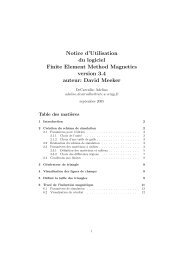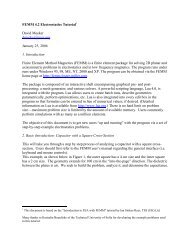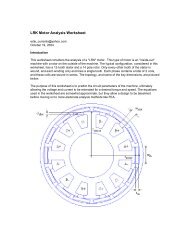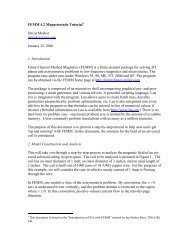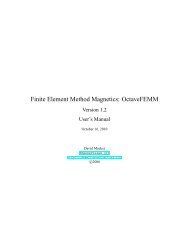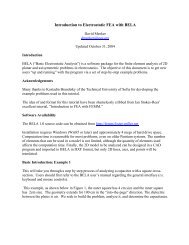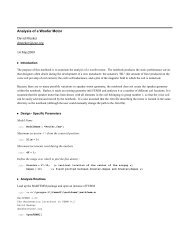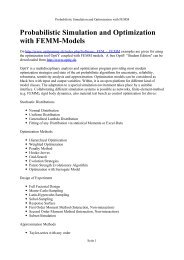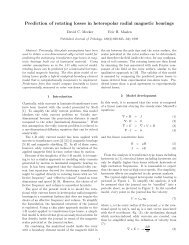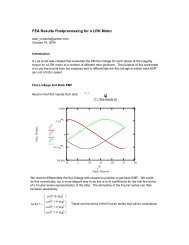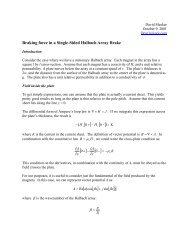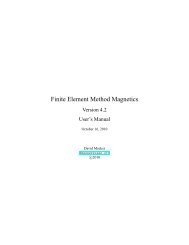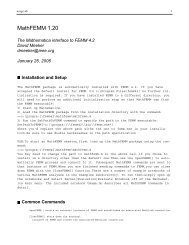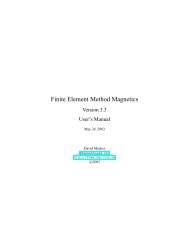1 Introduction - Finite Element Method Magnetics
1 Introduction - Finite Element Method Magnetics
1 Introduction - Finite Element Method Magnetics
You also want an ePaper? Increase the reach of your titles
YUMPU automatically turns print PDFs into web optimized ePapers that Google loves.
Figure 13: Different lamination orientation options.<br />
orientation parameters are used to implement a bulk model of laminated material. The result of<br />
this model is that one can account for laminations with hysteresis and eddy currents in harmonic<br />
problems. For magnetostatic problems, one can approximate the effects of nonlinear laminations<br />
without the necessity of modeling the individual laminations separately. This bulk lamination<br />
model is discussed in more detail in the Appendix (Section A.2).<br />
The dlam edit box represents the thickness of the laminations used for this type of material. If<br />
the material is not laminated, enter 0 in this edit box. Otherwise, enter the thickness of just the iron<br />
part (not the iron plus the insulation) in this edit box in units of millimeters.<br />
Associated with the lamination thickness edit box is the Lam fill factor edit box. This is<br />
the fraction of the core that is filled with iron. For example, if you had a lamination in which the<br />
iron was 12.8 mils thick, and the insulation bewteen laminations was 1.2 mils thick, the fill factor<br />
would be:<br />
Fill Factor = 12.8<br />
= 0.914<br />
1.2+12.8<br />
If a wire type is selected, the Strand dia. and/or Number of strands edit boxes become<br />
enabled. If the Magnet wire or Square wire types are selected, it is understood that there is can<br />
only be one strand, and the Number of strands edit box is disabled. The wire’s diameter (or<br />
width) is then entered in the Strand dia. edit box. For stranded and Litz wire, one enters the<br />
number of strands and the strand diameter. Currently, only builds with a single strand gauge are<br />
supported.<br />
If a wire type is specified, the material property can be applied to a “bulk” coil region each<br />
individual turn need not be modeled. In DC problems, the results will automatically be adjusted<br />
for the implied fill factor. For AC problems, the the fill factor is taken into account, and AC<br />
proximity and skin effect losses are taken into account via effective complex permeability and<br />
conductivity that are automatically computed for the wound region.<br />
3.7.4 Materials Library<br />
Since one kind of material might be needed in several different models, FEMM has a built-in library<br />
of Block Property definitions. The user can access and maintain this library through the<br />
24



